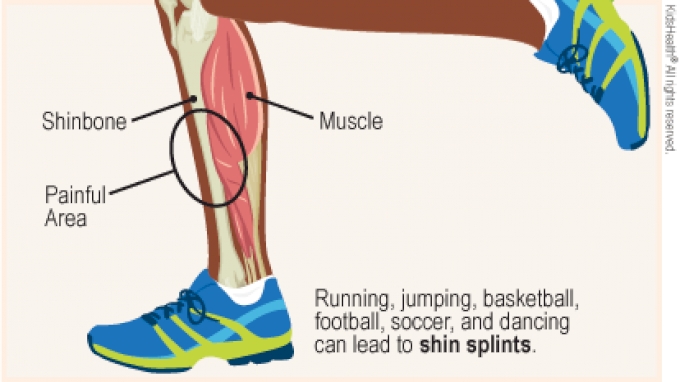A Tell-All Guide To Shin Splints
A Tell-All Guide To Shin Splints
Everything you need to know about the symptoms, treatment, and preventive measure for shin splints.

Plain and simple: shin splints are the worst! Whether you’ve had them yourself or you know someone who has, it is a pain that is not easily forgotten. It’s been almost 10 years since I’ve had them myself, but you bet I still remember how hard it was to move around. That being said, there are easy ways to reduce the symptoms and help treat shin splints to get you back in full recovery mode.
What Is It?
Medial Tibial Stress Syndrome (MTSS), also known as “shin splints,” occurs after recently intensified or changes in your exercise routine. Your tibia is the long bone in the front of your leg that starts right below your knee and stops at your ankle. This overworking leads to strain on your muscles, tendons, and bone tissue. Shin splints are common in athletes or those in very regimented exercise programs like the military.

Causes
There are various ways you can get shin splints. Those who run on difficult terrain or begin more intense workouts can lead to MTSS. Repeated running or jumping on hardwood surfaces can also contribute to this. Those who have flat feet or high arches are more susceptible to getting shin splints as well.
Symptoms
Symptoms from shin splints include pain, tenderness, and soreness in your low leg. The pain will focus more on the inner side of your leg. It might subside during exercises but the longer it goes untreated, the more continuous and strong the pain will become.
Treatment
The good news is that shin splints can be mostly cared for and treated by things you can do at home. Taking some time off exercising and running or engaging in low-intensity workouts is one option. Similar to most injuries, you need to give your body the rest it requires to heal itself. Icing your leg for 15-20 minutes a couple of times a day also helps. Lastly, taking any over the counter pain medications (i.e. Ibuprofen, Aleve, Tylenol) will also help minimize your symptoms to reduce pain.
If your pain worsens or continues for an extended period of time despite treatment and rest, you should see your doctor. Shin splints can worsen to a stress fracture, which can be detected by a medical professional and x-ray.
Prevention
Thankfully there are some clear ways you can go about to help prevent your chances of getting shin splints.
Correcting exercise forms: It’s extremely important that when you exercise or run, you maintain the right technique. The repeated contact between your foot and the ground combined with any incorrect movement habits can be the little thing to tweak a muscle and cause any injuries. Looking at your running form and evaluating any faults can be one way to help keep your body safe.
Wearing the right shoes: One of the most vital aspects of running is wearing the right type of shoe for you. This not only prevents shin splints, but it also decreases the chances of any other running injury to your foot, ankle, and legs. If you aren’t sure where to start, simply go to a running or athletic store and have an associate help you. If you are someone who needs extra support in certain areas of your foot, it’s important you take this step.
Strengthen your muscles: To help minimize any type of injury, you should make sure you’re taking the time to strengthen other key and supporting muscles in your body. Ankle exercises are extremely important to runners because there’s so much repeated contact and use there. Stabilizing muscles in your core, legs, and hips can also aid in preventive measures.
Give yourself a break: While exercise is important to your health as a whole, it’s also necessary to give yourself a break every once in a while. Lessening the intensity of a workout or avoiding a high-impact run when you might not be ready for it is not a sign of weakness. It’s vital that you care and treat your body with healthy habits.
Just about anyone can get shin splints so it’s important to recognize the symptoms and treatments for it. Thankfully there are easy-to-follow measures to get you back on the trail and running again in no time!